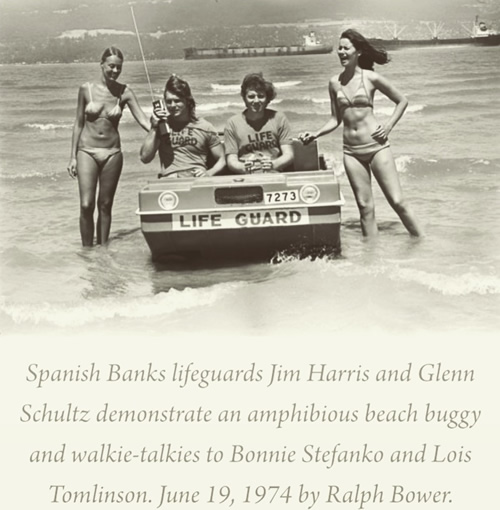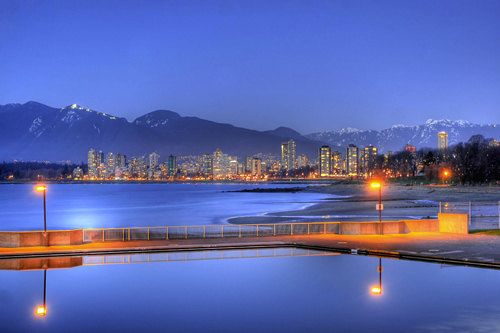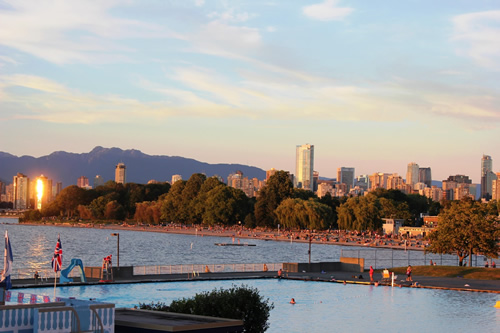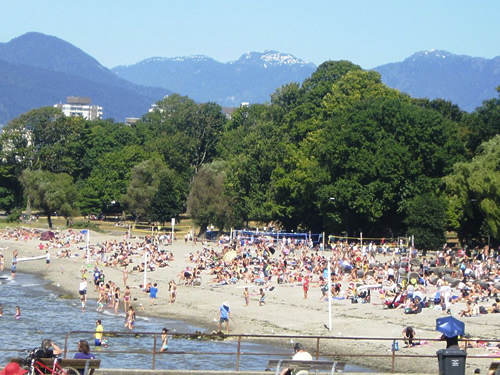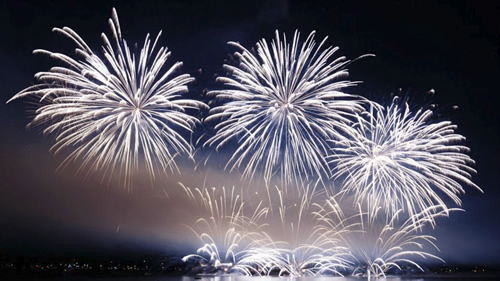
The Canada One Athletic Foundation (KitsFest) acknowledges the teritories of First Nations around B.C. and is grateful to carry out our work on these lands. We acknowledge the rights, interests, priorities, and concerns of all Indigenous peoples – specifically those present locally via the Musqueam Indian Band, Squamish Nation, and Tsleil-Waututh Nation – respecting and acknowledging their distinct cultures, histories, right, laws, governments.
Kitsilano is one of the most desirable and favorite Vancouver neighborhoods, located on the West Side of the city. Bounded to the north by the shores of beautiful English Bay, on the south by 16th avenue, Kitsilano stretches from Burrard Street on the east to Alma Street on the west.
Kitsilano takes its name after a Squamish First Nation chief, whose people were displaced by the local government in 1901. The first settlers were involved in logging and mill industry as Kitsilano region was a dense forest. The area, even though, a wild rain forest, was easily accessible thanks to its flatness.
Kitsilano Beach (then known as Greer Beach) was a very popular destination for many campers during the summer months, and after the city banned tenting in 1908, Kitsilano became one of the city’s parks. With the development of the CPR on the turn of the century, Kitsilano became more connected with the downtown and surrounding districts as it had two electric streetcar lines. After Burrard bridge was built in 1932,the area bloomed and the second stage of the housing development begun.
During the second half of the 20th century, more families, young professionals and students moved into the area making it a very popular neighborhood for new Vancouverites. Proximity to the downtown, stunning Kitsilano and Jericho beaches, housing developments and city infrastructure development made ‘Kits’ a desirable destination and home within the city’s limits.
Today’s Kitsilano neighborhood housing consists of heritage homes (many Craftsman style houses may be seen on the 5th and 6th Avenues), low-rise condo buildings, town homes and duplexes.


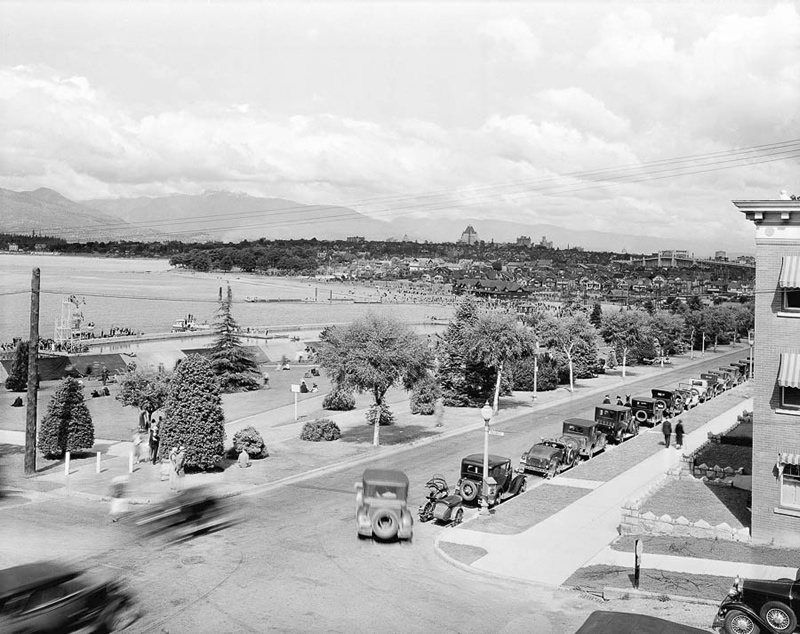
1931 – Kitsilano Pool opens
Kitsilano Pool opened with a marathon swim and lots of speeches by politicians
By John Mackie, Vancouver Sun August 14, 2015
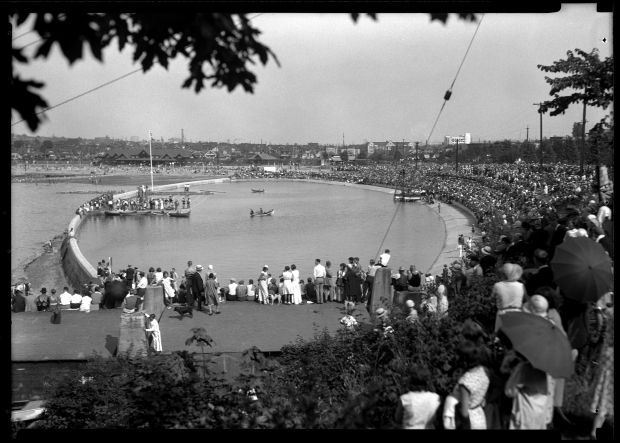
Thousands of spectators take in the opening ceremonies at Kitsilano Pool on Aug. 15, 1931. This photo ran on the front page of the Aug. 16, 1931 Vancouver Sunday Province, but was a freelance photo taken by Percy Bentley of the Dominion Photo Company. Vancouver Public Library collection VPL 23379. For a John Mackie story.
Eighty-four years ago, “America’s largest swimming pool” opened in Kitsilano.
“Nestling in a curve of Kitsilano Beach, America’s largest open air swimming pool presented a picturesque sight on Saturday afternoon before a crowd of nearly 5,000 persons,” reported the Vancouver Sunday Province.
The Province ran a beautiful Percy Bentley photo of Kitsilano Pool on the front page that captured its elegant “elliptical shape.”
Not to be outdone, The Vancouver Sun ran five photos on its front page. But none were of the actual pool.
The Sun had sponsored a six-mile swimming race from Point Atkinson in West Van (Lighthouse Park) to Kits Beach. So it ran pix of the marathon swimmers, including the winner, Percy Norman.
Sun writer Pat Terry portrayed the race as “the dramatic struggle of a young girl swimmer against tide, time and a famous British Columbia man swimmer.”
The girl was Carrie Gray, a last-minute entrant from Victoria who challenged Norman for most of the race.
“Here was a great race, over a gruelling distance, with the best swimmers of both sexes engaged!” wrote Terry. “From the crack of the starting pistol the duel was on. Blazing sun beat down on the ice-cold sea, ruffled to waves offshore by a westerly wind.”
The swimmers were guided by boats which showed them the way to shore. At one point Gray surged ahead of Norman, which brought a lump to Terry’s throat. But the boat piloted by her father ran a little off course, which caused her to lose precious time and ensured Norman’s victory.
“A grand swim,” Norman told Terry after the race. “Pity the little girl was out of her course, for she’s a wonderful swimmer.”
Back at Kits Pool, meanwhile, there were another 24 swimming, diving and life-saving events for the spectators, along with a big opening ceremony.
Provincial attorney-general R.L. (Royal Lethington) Maitland congratulated the Vancouver park board for building the pool, which he said would “more than repay the cost in increased health and future of the city’s greatest asset, its boys and girls.”
Park board chairman Fred Crone said the $50,000 pool wasn’t just for Kits, but for the whole Lower Mainland.
“The park board chairman stated that the new pool is 660 by 200 feet and contains 2.3 acres,” reported the Province.
“Its depth is from two feet to eight feet, the average being five feet six inches. The depth on the central axis is five feet and the depth for special diving events is 15 feet. It has a liquid capacity of 3,500,000 gallons, and is the only pool on the continent on which a 220-yard swimming race can be staged on a straightaway course.”
The pool was filled with salt water, and filled with the tide.
“It can be emptied and filled in accordance with the tidal conditions, and the water will be replenished daily,” said the Province. “The temperature will be probably 10 degrees higher than the open sea.”
Kits Pool quickly became a local icon. Norman Young recalls that a high diving board was installed there for Vancouver’s 50th birthday in 1936.
“The diving board must have been 30 to 40 metres (high),” Young said.
“They bought in cliff divers from Mexico or Hawaii, and they had to dig a really big hole, a really deep thing below for the divers to go into.”
After the cliff divers went home, the park board left the diving board up, but put barriers up so kids wouldn’t go too high and hurt themselves.
“It became a rite of passage as a male to climb around the bloody obstructions and jump off the top,” said Young. “Well, what else did you do in Kitsilano in 1937 or ’38?”
The original Kits Pool was replaced by the current one in 1979. It’s now heated, but remains a salt water pool that is replenished by the tide.

Early 1970’s Beach Volleyball: Wilt Chamberlain vs. Jim Clive + Richard Schick
